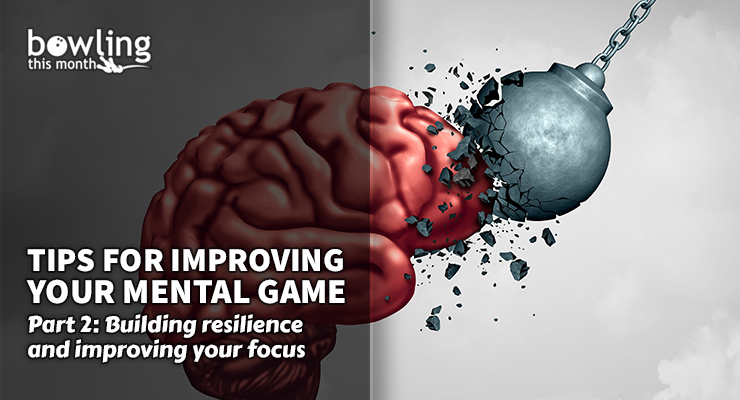Article Contents
- 1. Developing resilience
- 1.1. After an open
- 1.2. After a bad game
- 1.3. After a bad series
- 1.4. Between tournament blocks
- 1.5. Between league sessions
- 2. Improving your focus
- 2.1. Bowling focus
- 2.2. Improving your weakest area
- 3. Conclusion
Note: This article is only available to Bowling This Month subscribers.
In the first part of this series, we discussed evaluating and tracking your mental game, the importance of routines, and the foundational skill of visualization. The final two tips related to the mental game in this series are developing resilience and understanding focus.
Resilience is not bowling-specific, but it is necessary to be competitive because there are always setbacks and failures that a bowler must face. It’s arguable how much of a skill this is versus being a personal attribute, but as it is something that can be developed with some time and effort, I include it in this list as something we can practice and improve.
Focus is one of the most misunderstood concepts there is, starting with how we use the term as a directive from an early age. When kids are told to focus, it is almost always because they are daydreaming or not listening to an authority figure. In reality, though, the child is focusing; their attention is simply directed inward and not at the person making the request. As we’ll see, understanding your preferred area of focus and understanding how focus is used in bowling can help you improve your game immensely.
Developing resilience
Resilience can be loosely defined as the ability to bounce back from adversity, which most people also call mental toughness. Generally speaking, it combines problem-solving and confidence, but every list for resilience differs slightly. For that reason, let’s look at bowling-specific examples of resilience and how to develop them.
After an open
The smallest scale level of resilience would be bouncing back from an open, whether from a bad break, a mistake in execution, or a bad lane play decision. Resilience at this level is mostly about confidence, as the “hit” you take from a single frame blip is not very big. In this case, bouncing back requires throwing your best ...
Already a premium member? Click here to log in.


